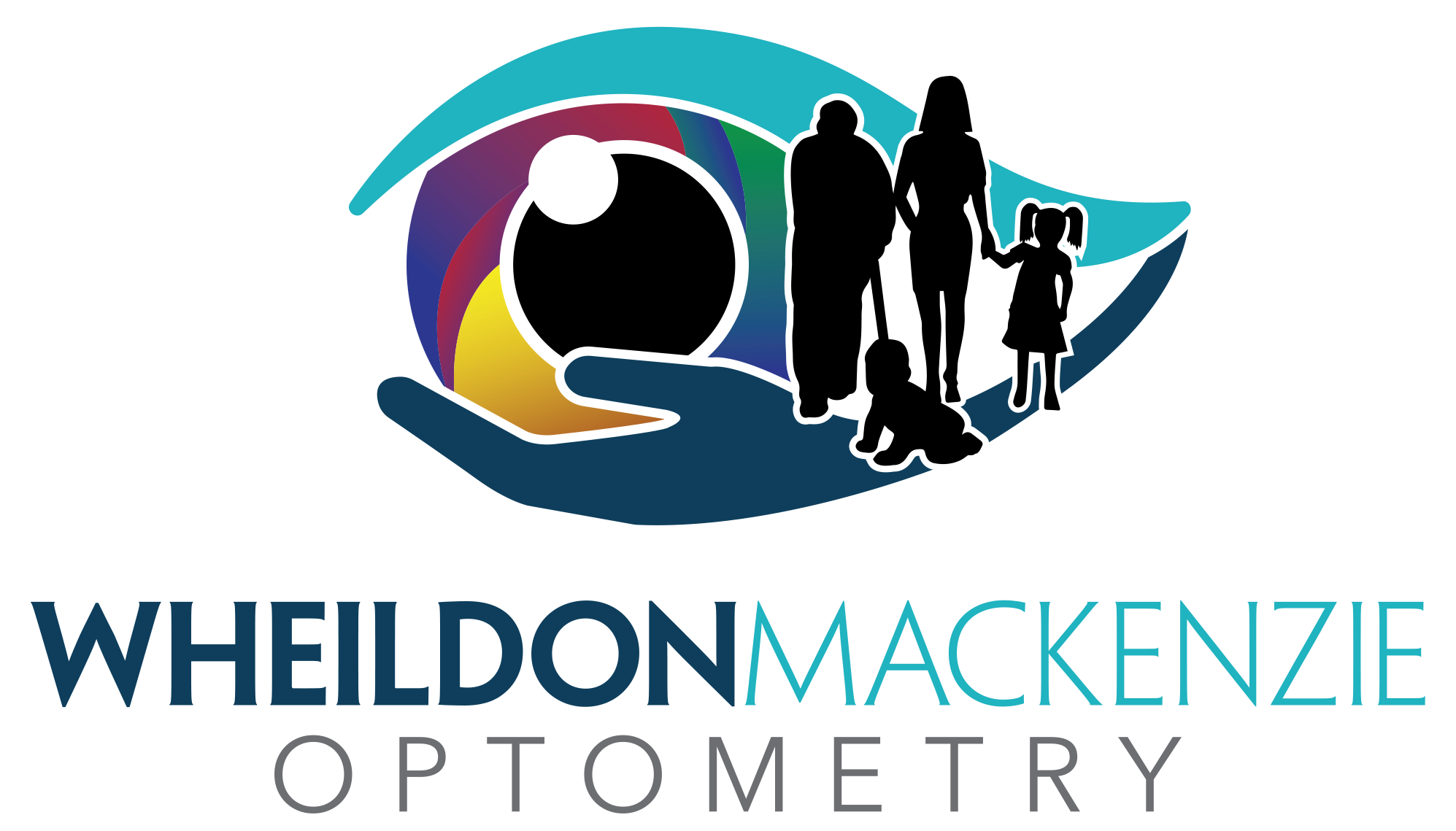Why is everyone talking about Blue Light Glasses?
I have done some research to give you a background of what blue light is and how it can be harmful, but also beneficial and what we can offer you at our office.
Background information about Blue Light
Certain visible wavelengths of blue light can possibly be damaging to the eye (studies are ongoing) as they are right beside the UV wavelengths in the light spectrum.
How are certain wavelengths damaging?
UVC rays (100-280nm) are fully absorbed by the ozone
UVB rays (280-315nm) are mostly absorbed by the cornea and the remainder by the crystalline lens
(REASON WE SHOULD ALWAYS WEAR SUNGLASSES)Cataract formation
UVA rays (315-380nm) penetrates deeper into the eye up to crystalline lens
(REASON WE SHOULD ALWAYS WEAR SUNGLASSES)Cataract formation
Harmful blue light (380-455nm) with the greatest toxicity (415-455nm) induces a high rate of retina cell death, increases oxidative stress to the retinal cells and decreases the retinal cells natural antioxidant defences
(THIS IS WHY WE RECOMMEND GOOD NUTRITION WITH ANTIOXIDANT FOODS EG. BLUEBERRIES)Macular degeneration and other macular diseases
Children’s crystalline lenses let through 6X more harmful radiation than Adult crystalline lenses.
What are sources of harmful blue light?
Sun (25-30%)
Compact fluorescent lamps (CFL) (26%)
Cool white LED (at least 35%)
Traditional incandescent lamps (3%)
LED screens (TV, computer monitors, mobile phones, tablets)
It is estimated that by 2020, 84% of all lighting sources will be LED
But there are also certain wavelengths of blue light that are beneficial for our circadian sleep cycles.
Beneficial blue light (465-495nm)
I won’t go into detail about sleep cycles but just know that the circadian system helps our bodies in repairing damaged cells and controlling against disease.
Even though there is beneficial blue light, the light that we are exposed to between 5pm and 5am has an effect on our biological clocks.
This is why we have heard to limit device time before going to bed.
Therefore we need to prevent the harmful wavelengths from transmitting through the lens but still allow the beneficial wavelengths to transmit through.
There are two ways to decrease blue light transmission through a lens
Have it embedded into the lens
AND/OR
Apply it as a coating
100% transmission cannot be blocked as that would not allow us to perceive any blue light through the lens, hence we would not see blue colours/shades.
Blue Light Glasses
The ophthalmic lens labs that we work with, offer us both the embedding and surface coating options.
Having both options gives us the greatest amount of protection. For example:
A lens that just has the embedding decreases the blue light transmission by ~20% and cuts 100% UV from the front surface of the lens
Adding the coating will give the lens a “SPF” factor of 35 and cut 100% UV on the back surface of the lens (think of this like your SPF value you get in sunscreen)
One particular coating adds another ~10% decrease in blue light transmission
Only having the coating gives a “SPF” of 25 and 100% UV protection
There is no decrease in blue light transmission except the one coating that gives ~10%
THESE NUMBERS ARE BASED ON WHAT OUR LAB IS ABLE TO OFFER YOU
I DO NOT KNOW THE PROTECTION LEVELS OF BLUE LIGHT GLASSES BOUGHT ANYWHERE ELSE. (IN-STORE OR ONLINE)
In the majority of lenses that have the embedding, the lens can have a residual “yellow” colour.
The lab we work with has been able to remove that yellow colour.
The coating that gives ~10% decrease in blue light transmission will still have a slight yellow tint, but it is minimal.
These lenses and coatings are available for prescription (single vision and progressive) and non-prescription glasses at our office.
This video provides information about the one coating option that gives ~10% decreased blue light transmission.




